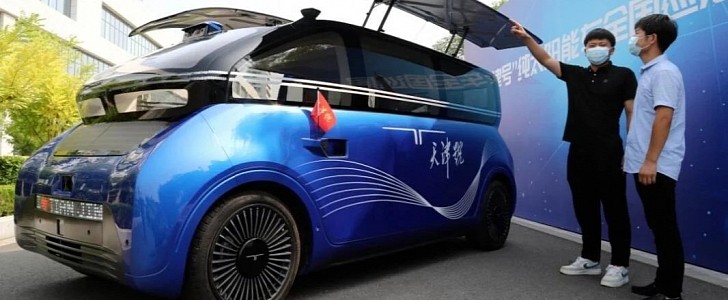Solar panels are everywhere these days, except for electric vehicles. It seems like a no-brainer to charge EV batteries using solar panels, yet no one does it. A Chinese team doesn’t seem to care about that and developed an electric vehicle that uses solely solar energy to drive.
No electric vehicles have solar panels on the roof to make up for the lost charge during everyday driving. Not even Tesla, a company deep into solar, didn’t think this was a viable solution. The reasons are many, but the most important is current solar panels’ relatively low energy efficiency. Even though they can harness enough energy to power houses and communities, solar panels are too heavy and complicated to justify installation on an electric vehicle.
Some carmakers like Toyota thought a solar panel could still be useful to power ventilation while parked in the sun. This didn’t take off either, as people weren’t willing to pay for that. Currently, several companies are trying to integrate solar power with batteries to power electric vehicles. Lightyear is one of them, but their solar-powered car costs a fortune and has laughable specifications.
In Tianjin, China, a team has developed a more sensible solar-powered vehicle with unique characteristics. For instance, the car offers seating for four people in a city-car form factor and is capable of performing autonomous driving at “Level 4 and above,” according to CNEVPost. The solar panel area measures 8.1 square meters (87.2 square feet), which allows it to generate up to 7.6 kWh on sunny days. This charges a high-density Li-Ion battery (330 Wh/kg) able to power the car for up to 75 km (47 miles).
The car was presented to the public during the recent World Intelligence Conference. It was jointly developed by 42 companies and three universities in just five months. While not the first EV to use solar power, the Tianjin project introduces some clever technologies and concepts that one day could be integrated into a production vehicle.
Some carmakers like Toyota thought a solar panel could still be useful to power ventilation while parked in the sun. This didn’t take off either, as people weren’t willing to pay for that. Currently, several companies are trying to integrate solar power with batteries to power electric vehicles. Lightyear is one of them, but their solar-powered car costs a fortune and has laughable specifications.
In Tianjin, China, a team has developed a more sensible solar-powered vehicle with unique characteristics. For instance, the car offers seating for four people in a city-car form factor and is capable of performing autonomous driving at “Level 4 and above,” according to CNEVPost. The solar panel area measures 8.1 square meters (87.2 square feet), which allows it to generate up to 7.6 kWh on sunny days. This charges a high-density Li-Ion battery (330 Wh/kg) able to power the car for up to 75 km (47 miles).
The car was presented to the public during the recent World Intelligence Conference. It was jointly developed by 42 companies and three universities in just five months. While not the first EV to use solar power, the Tianjin project introduces some clever technologies and concepts that one day could be integrated into a production vehicle.








